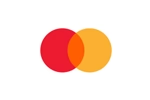Here’s everything you need to know:
What Causes Acne:
Types of Pimples:
Daily Skincare Regime for Acne-Prone Skin
Step 1: Cleanse
 Source: Mario Badescu, Tatcha, Neutrogena
Source: Mario Badescu, Tatcha, Neutrogena
Pay with easypaisa/jazzcash/upaisa and get Rs. 500 cashback voucher!
Here’s everything you need to know:
 Source: Mario Badescu, Tatcha, Neutrogena
Source: Mario Badescu, Tatcha, Neutrogena






Are you 18 years old or older?
Sorry, the content of this store can't be seen by a younger audience. Come back when you're older.

